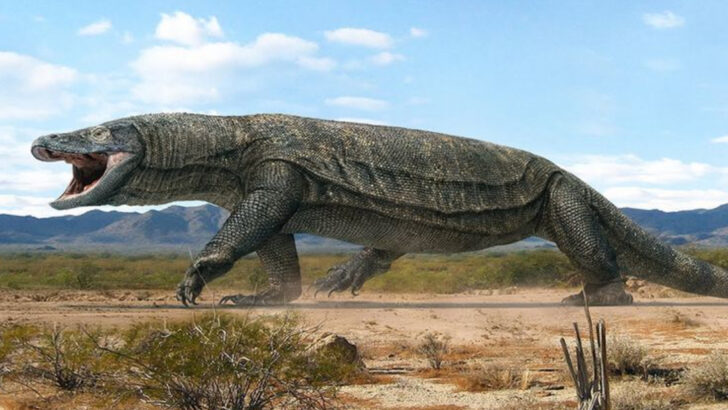Before mammoths and saber-toothed cats stole the spotlight, other giants ruled the Earth—and most people have never heard their names. These beasts weren’t just big. They were bizarre. Massive horned turtles, crocodiles the size of buses, sloths that stood taller than giraffes. Creatures so strange, they sound made up—yet they once roamed the same planet we walk today. They vanished long before written history, leaving behind bones, clues, and a whole lot of mystery. Here are 14 forgotten giants that didn’t make it into the museums—but they absolutely should have.
Gigantopithecus
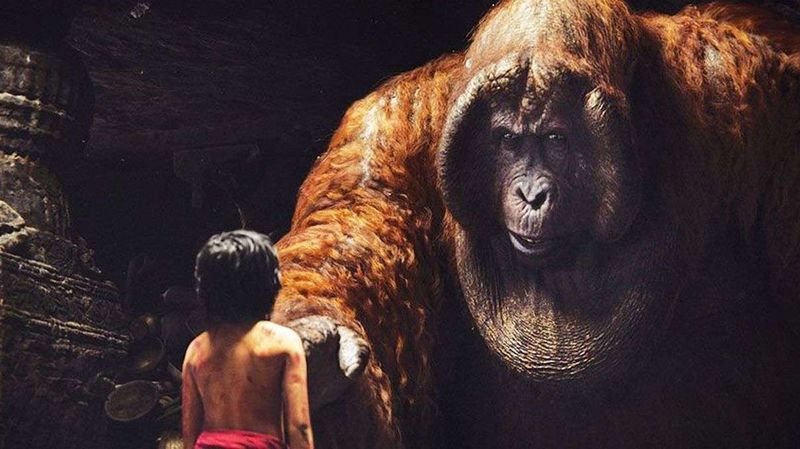
Imagine a creature that stood almost ten feet tall and weighed over 1,000 pounds. This ape, Gigantopithecus, lived in the forests of Asia during the Pleistocene epoch. Known for its massive jaws and teeth, it likely feasted on bamboo and other vegetation. Its sheer size dwarfed all modern apes.
Could Gigantopithecus have inspired the legend of Bigfoot? Some think so. With fossils found predominantly in China, India, and Vietnam, this gentle giant remains shrouded in mystery.
Despite its extinction around 100,000 years ago, its legacy endures, sparking imaginations worldwide.
Megalania
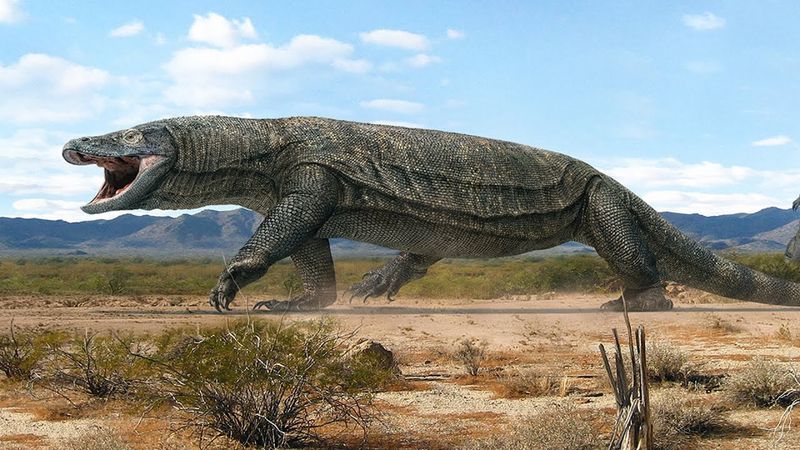
The Megalania was a gigantic monitor lizard, roaming the lands of ancient Australia. Growing up to 23 feet in length, it was the largest terrestrial lizard known. Its powerful limbs and sharp teeth made it a fearsome predator.
Often compared to modern Komodo dragons, Megalania’s existence raises questions about the ecosystem dynamics of prehistoric Australia. Did it prey on early humans or megafauna? This giant lizard sparked tales of monstrous reptiles lurking in the bush.
Though extinct for tens of thousands of years, its story continues to intrigue herpetologists and historians alike.
Quetzalcoatlus
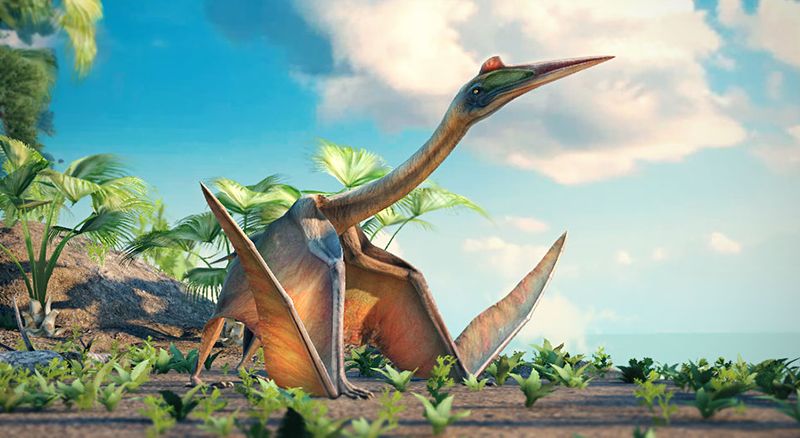
With a wingspan estimated at over 30 feet, Quetzalcoatlus was one of the largest flying creatures ever. This pterosaur dominated the skies of North America during the late Cretaceous period. Its long, slender neck and beak suggest it might have hunted fish or scavenged carrion.
Quetzalcoatlus’ flight mechanics continue to fascinate scientists, as its size challenges our understanding of flight. Were these giants the inspiration for ancient myths of flying dragons? The mystery lingers.
Their fossils, primarily found in Texas, offer a glimpse into a world where giants ruled the air.
Deinotherium
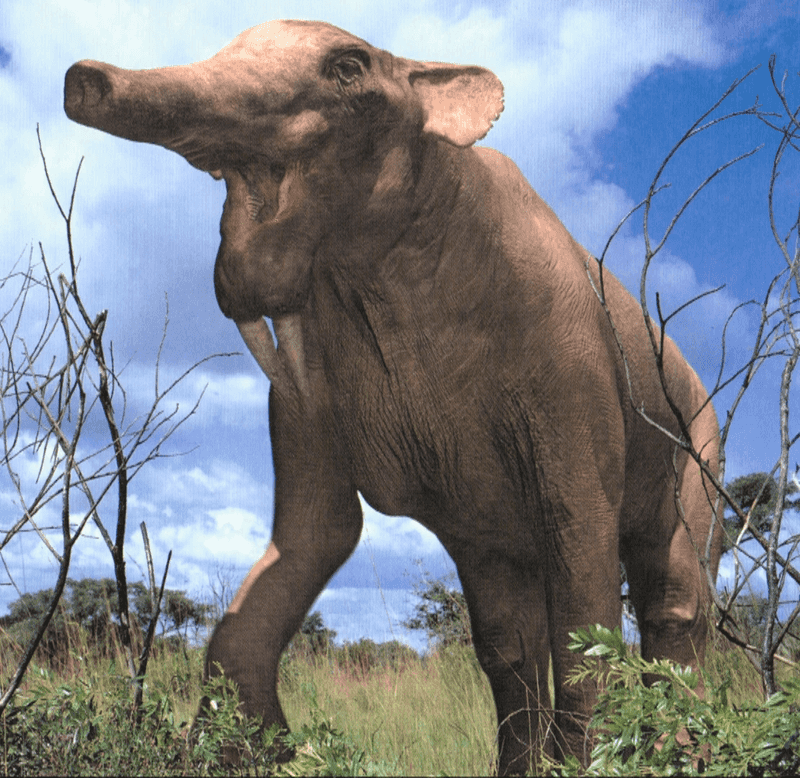
Deinotherium, an ancient relative of modern elephants, stood out for its unusual tusks. Unlike today’s elephants, its tusks curved downward, a feature that intrigued paleontologists. This giant roamed Europe, Asia, and Africa around 10 million years ago.
With a height reaching up to 15 feet, it towered over many creatures of its time. Its diet likely consisted of leaves from tall trees, using its trunk and tusks to reach high vegetation.
Deinotherium’s presence in various continents highlights the diverse megafauna of the Miocene epoch, a time of great biological diversity.
Paraceratherium
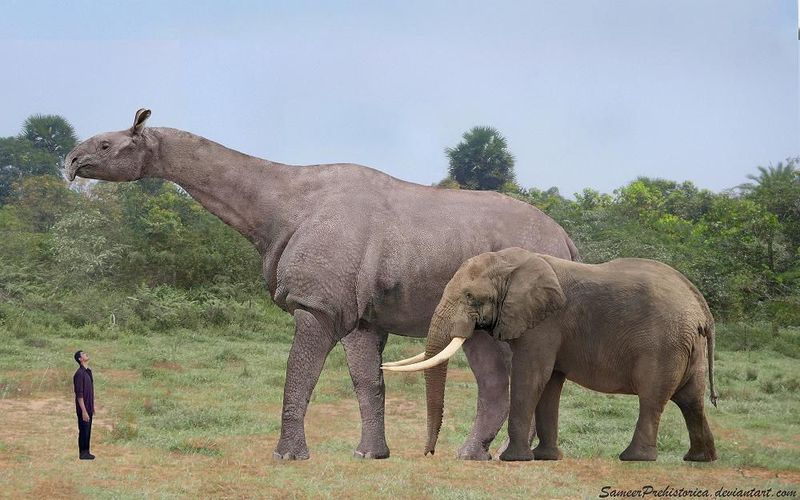
Meet Paraceratherium, one of the largest land mammals ever, often compared to a gigantic rhino without a horn. This behemoth lived during the Oligocene epoch, wandering across Asia. Its long neck allowed it to feed on leaves from tall trees, much like a giraffe.
Despite its immense size, it likely had a gentle demeanor, relying on its stature to deter predators. Weighing as much as several elephants, it was a true wonder of the ancient world.
Paraceratherium challenges our perceptions of mammalian evolution, showing the incredible adaptability of these prehistoric giants.
Arthropleura
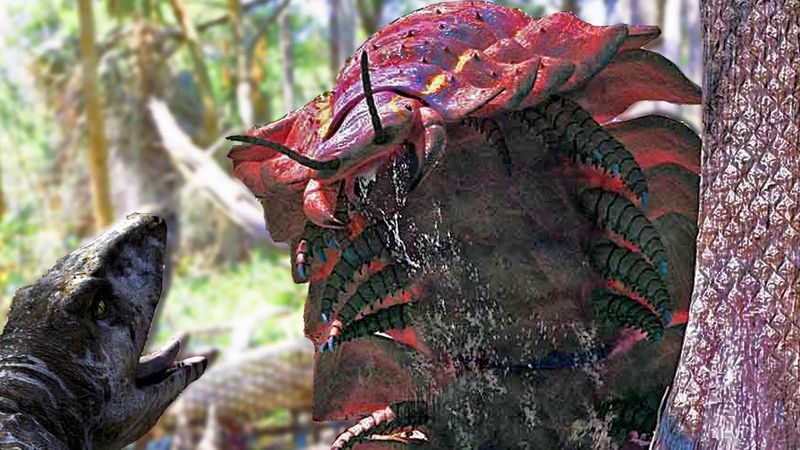
Imagine a millipede as long as a car. Arthropleura was the largest known land invertebrate, stretching up to 8 feet in length. It lived during the Carboniferous period, inhabiting the lush forests of what is now North America and Scotland.
Feeding on decaying plant matter, Arthropleura played a crucial role in its ecosystem. Its armored segments provided protection against predators.
The sheer size of Arthropleura is a testament to the high oxygen levels of its time, allowing such massive arthropods to thrive. Its presence paints a vivid picture of prehistoric life on land.
Basilosaurus
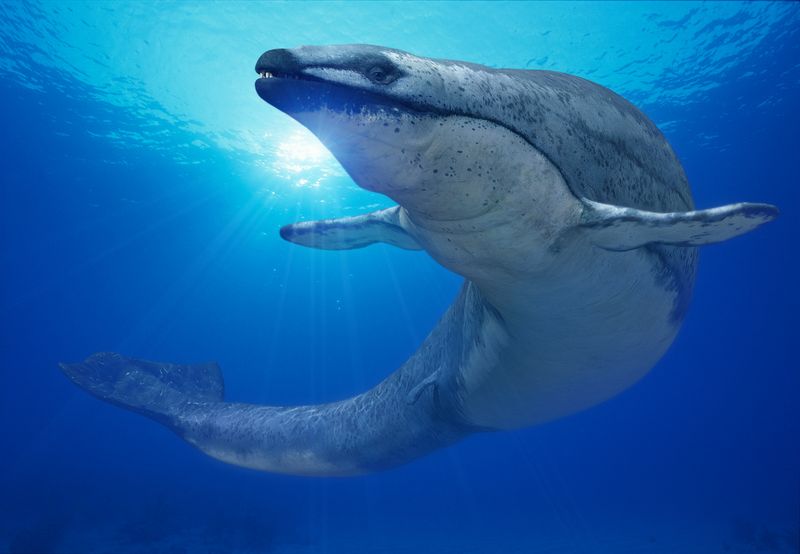
Basilosaurus, despite its name meaning “king lizard,” was actually an ancient whale. Living around 40 million years ago, it dominated the Tethys Sea. Its elongated body, reaching up to 60 feet, resembled that of a serpent, inspiring tales of sea monsters.
This whale’s vestigial hind limbs are a fascinating feature, hinting at its evolutionary transition from land to sea. As a top predator, Basilosaurus fed on fish and smaller marine mammals.
The discovery of Basilosaurus fossils helped unravel the complex history of cetacean evolution, shedding light on the origins of modern whales.
Therizinosaurus
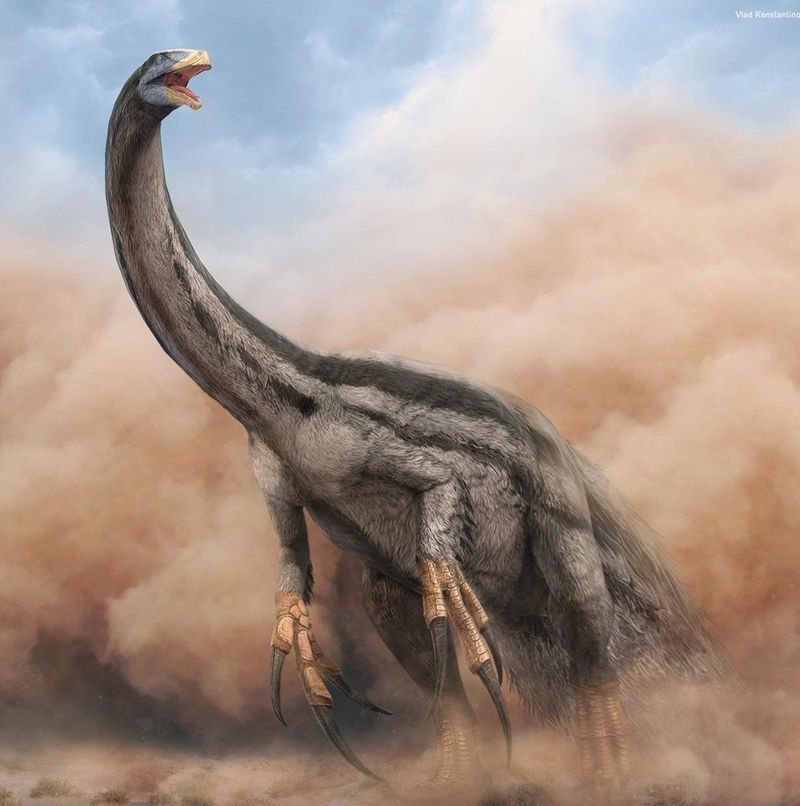
Therizinosaurus stands out for its enormous, scythe-like claws, each measuring up to three feet long. This herbivorous dinosaur roamed Asia during the late Cretaceous period. Its unusual anatomy confounded early paleontologists, who initially thought its claws belonged to a giant turtle.
Feeding on vegetation, Therizinosaurus used its claws to reach and rake leaves. Its enigmatic features spark curiosity about its behavior and role in its ecosystem.
Therizinosaurus is a reminder of the diversity and complexity of dinosaur evolution, with its bizarre appearance captivating all who study it.
Dunkleosteus
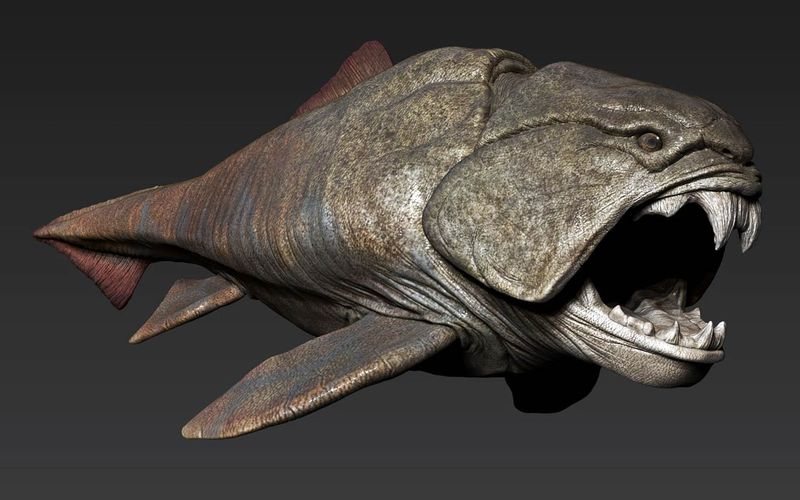
Dunkleosteus was a prehistoric fish with an imposing armored head and a jaw capable of delivering a powerful bite. This apex predator thrived in Devonian seas, measuring over 30 feet in length. Its bony plates and sharp fangs enabled it to crush prey with ease.
Often compared to modern-day sharks, Dunkleosteus’ presence signifies the fierce competition in ancient marine ecosystems. Its fossils, primarily found in North America, reveal much about the aquatic life of its era.
This ancient fish continues to fascinate as a symbol of prehistoric marine dominance and evolution.
Titanoboa
In the humid jungles of prehistoric South America slithered Titanoboa, the largest snake ever discovered. This behemoth reached lengths of up to 42 feet, preying on crocodiles and other large animals.
Living around 60 million years ago, its discovery in Colombia sheds light on the climate and environment of the Paleocene epoch. Titanoboa’s immense size suggests a warm climate with abundant prey.
The sheer scale of Titanoboa challenges our understanding of snake evolution, offering a glimpse into a world where reptiles ruled the tropics.
Megaloceros
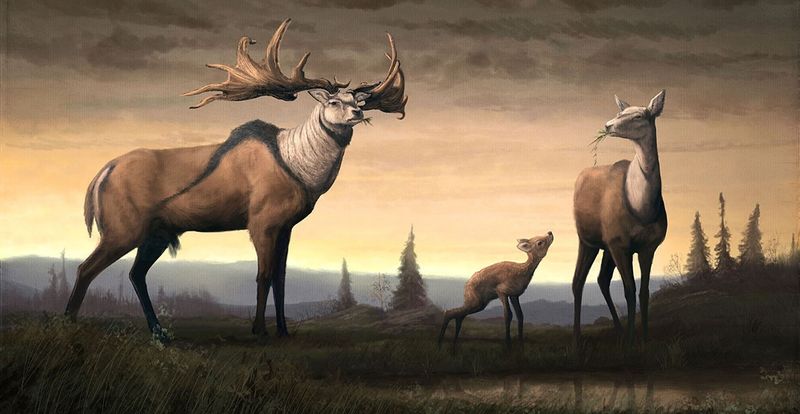
Megaloceros, often referred to as the “Irish Elk,” was a giant deer known for its massive antlers, stretching up to 12 feet across. This majestic creature roamed the open woodlands and meadows of Eurasia during the last Ice Age.
Its impressive antlers were likely used for display and combat during mating season. Despite its common name, it wasn’t limited to Ireland but had a wide distribution across Europe and Asia.
Megaloceros remains a symbol of the grandeur and diversity of Pleistocene megafauna, capturing the imagination of all who study its fossils.
Helicoprion
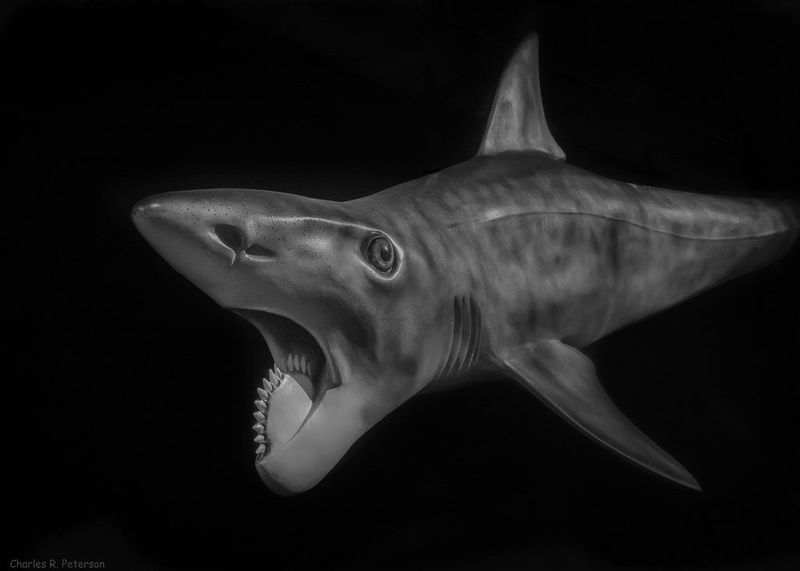
Helicoprion, an ancient shark-like fish, is renowned for its unique spiral tooth whorl. Living during the Permian period, it swam the oceans with this bizarre dental arrangement, which puzzled scientists for decades.
The function of its spiral teeth remains mysterious, though it likely aided in slicing through soft-bodied prey. Fossils of Helicoprion are primarily found in Russia, the USA, and Australia.
This enigmatic creature exemplifies the evolutionary experimentation of prehistoric seas, continually intriguing paleontologists with its unusual morphology.
Andrewsarchus
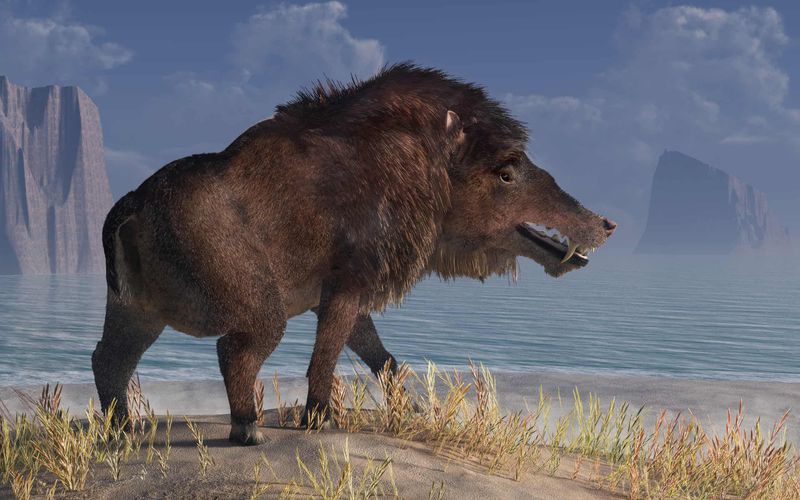
Andrewsarchus, often dubbed the largest terrestrial mammalian carnivore, roamed the Eocene epoch landscapes of Mongolia. Its size and predatory nature have sparked imaginations and debates alike.
With an enormous skull reaching up to three feet in length, it was likely an apex predator. Though its full appearance remains speculative, Andrewsarchus’ fossils provide invaluable insights into Eocene ecosystems.
Its name honors explorer Roy Chapman Andrews, whose expeditions uncovered its remains, forever linking adventure and discovery in the realm of paleontology.
Platybelodon
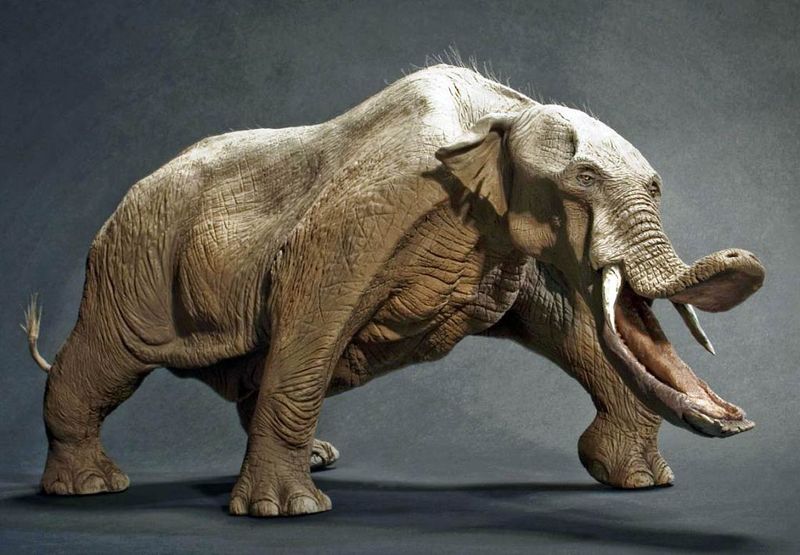
Meet Platybelodon, the prehistoric creature with a jaw like no other. Often compared to a modern-day elephant, this fascinating beast had a unique flat, shovel-like jaw that it used to scoop up vegetation.
Can you imagine the sight of this creature wading through ancient wetlands, using its specialized mouth to gather plants? Its peculiar anatomy made it a skilled forager in its lush environment.
A marvel of evolutionary adaptation, Platybelodon’s curious appearance and feeding habits set it apart from other prehistoric giants, making it a truly unforgettable member of our planet’s ancient past.

